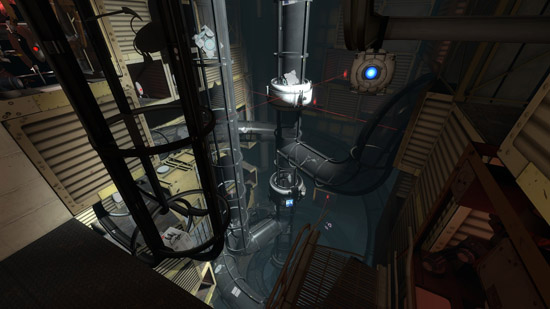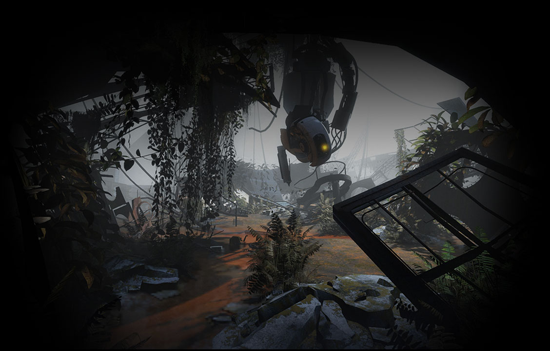The following review contains minor spoilers. You’ve been warned.
It’s hard to believe it’s been almost four years since Valve released The Orange Box, and my mind is already starting to have trouble remembering what life was like before Portal was unleashed upon an unsuspecting gaming populace. See, nobody knew what to make of it - most gamers knew it was the product of a group of recent hires’ student project, and its place in The Orange Box seemed like a bit of a Trojan Horse move to get an experiment in the hands of gamers eagerly anticipating Half-Life 2: Episode 2 and Team Fortress 2.
While the other games in that package were certainly no slouches, it was Portal, with its mind-bending gameplay, internet-ready memetic tendencies, unexpected plot, hilarious dialogue and strange cast of characters that everyone talked about in the following weeks. It was short and sweet, and though some gamers thought it was a little too short, it’s hard to argue that it overstayed its welcome. Some would say the world got exactly as much Portal as it needed, especially once we all grew tired of ceaseless cake references. Fortunately for us, Valve decided to take their little experiment and blow it up into a full-fledged game. And what a game it is.
Portal 2 opens a number of years after the destruction of GlaDOS, in a confined area styled after a late-1970’s hotel room. A charming AI sphere named Wheatley shows up and informs you that a.) you possibly have a minor case of severe brain damage, and b.) that you both need to escape the facility. Once you acquire your old friend, the Aperture Science Handheld Portal Device, you’ll romp through some familiar areas with Wheatley acting as a guide before inadvertently rebooting your old arch-nemesis. It’s here that the story kicks into high gear, and where saying any more will severely diminish your enjoyment of the plot.

Don't miss the obvious solution when you get here. *blush*
The single-player campaign is split into three distinct sections, each with an overarching theme. The first act reintroduces you to the familiar portal mechanics of the first game, as well as adding springboards (Aerial Faith Plates), light bridges (Hard Light Bridges) and tractor beams (Excursion Funnels) to the mix. Many puzzles also involve using blocks with lenses in them to refocus laser beams that power machines in the test chamber. With these elements alone, there could be enough diversity for an entire game, but the second act introduces a liquid mechanic in the form of various gels you can apply to surfaces.
There are three types of gels to toy with: Repulsion gel (blue) causes whatever touches it to bounce like a trampoline, Propulsion gel (orange) acts as a sort of Slip n’ Slide, causing rapid acceleration of objects moving across it, and Conversion gel (white) allows you to paint a surface with material that allows you to place a portal on it.
Mixing portals and a stream of gel to “paint” areas of a level with the appropriate substance is akin to finishing a half-built machine, and is a great contrast to the pre-set conditions found in earlier test chambers. Once the final act expands your toolbox to include portals, gels and all of the other new mechanics, the solutions to tests are both mind-bending and incredibly satisfying. It’s a testament to Valve’s skill at level design that some of the more esoteric puzzles are solvable in the first place, and the game never makes you feel stupid, even if you get stuck for a while.
Much will be said about the game’s final act as people finish the story up, but all I will say is that the ending to Portal 2 ranks very highly in my shortlist of all-time great game endings. Whether or not you choose to replay it is up to you, but the game’s nature makes it difficult to have the same quality of experience upon repeat play.
